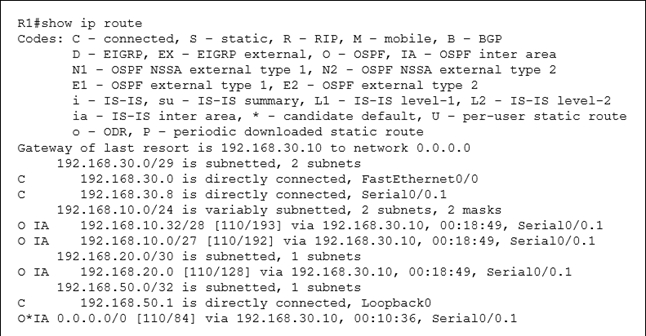
Refer to the exhibit. What is the metric of the route to the 192.168.10.33/28 subnet?
E
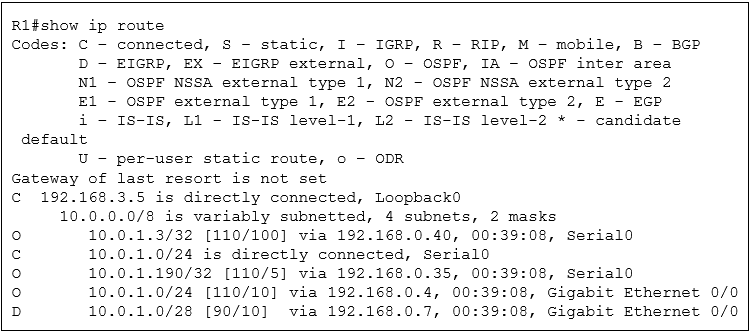
Refer to the exhibit. Traffic sourced from the loopback0 interface is trying to connect via ssh to the host at 10.0.1.15. What is the next hop to the destination address?
A
The router will choose the route will the longest matching prefix, in this case that is 10.0.1.0.28.
When the active router in a VRRP group fails, which router assumes the role and forwards packets?
C
Which action does the router take as it forwards a packet through the network?
C
Reference:
https://www.freeccnastudyguide.com/study-guides/ccna/ch4/ip-routing/

Refer to the exhibit. Which two prefixes are included in this routing table entry? (Choose two.)
AB
Which virtual MAC address is used by VRRP group 1?
D
What is the purpose of using First Hop Redundancy Protocol on a specific subnet?
B
The routers in the FHRP group share a virtual MAC and Virtual IP and that acts as the Default Gateway for the HOSTS. It provides redundancy is case a router fails, no need to change the default gateway information.
Refer to the exhibit. Which configuration issue is preventing the OSPF neighbor relationship from being established between the two routers?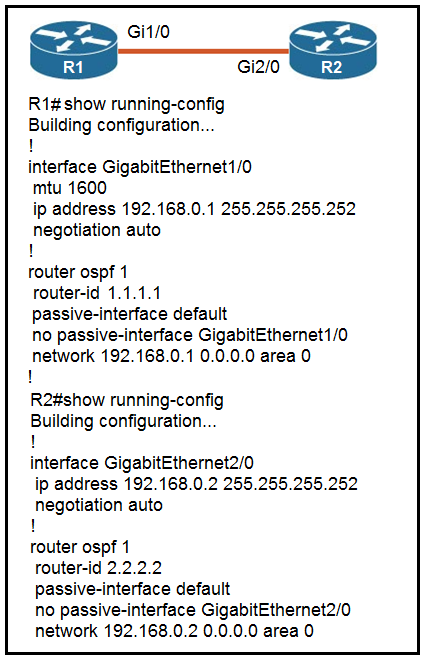
C
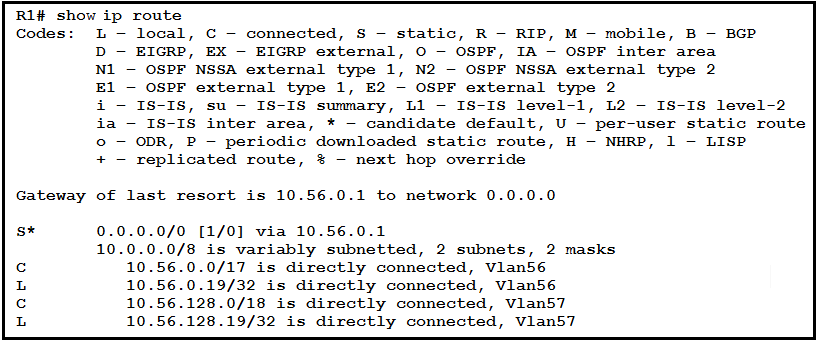
Refer to the exhibit. When router R1 is sending traffic to IP address 10.56.192.1, which interface or next hop address does it use to route the packet?
A
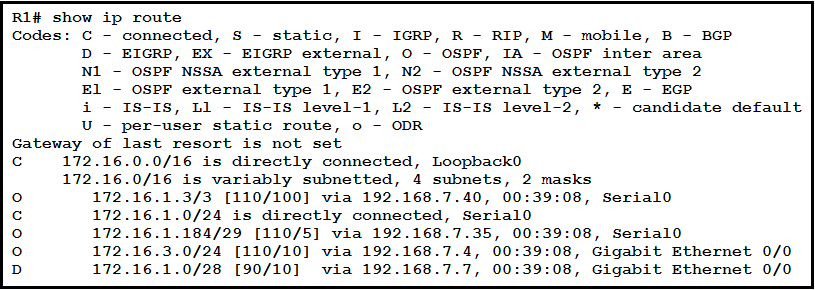
Refer to the exhibit. Load-balanced traffic is coming in from the WAN destined to a host at 172.16.1.190. Which next-hop is used by the router to forward the request?
C